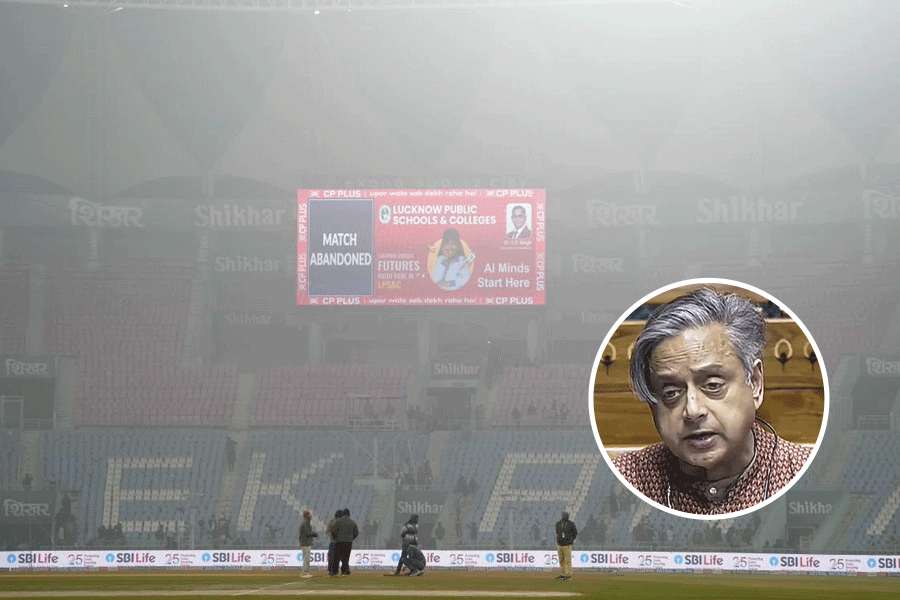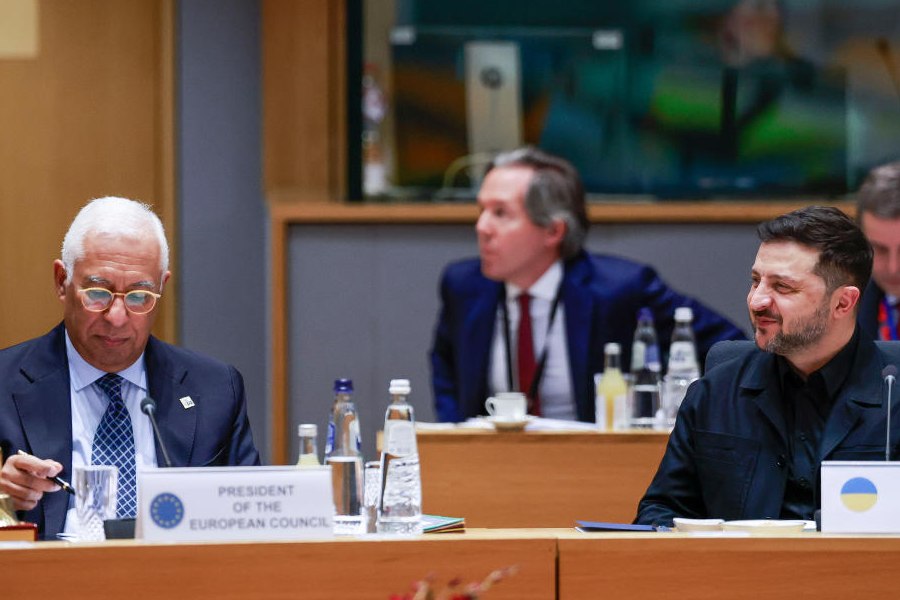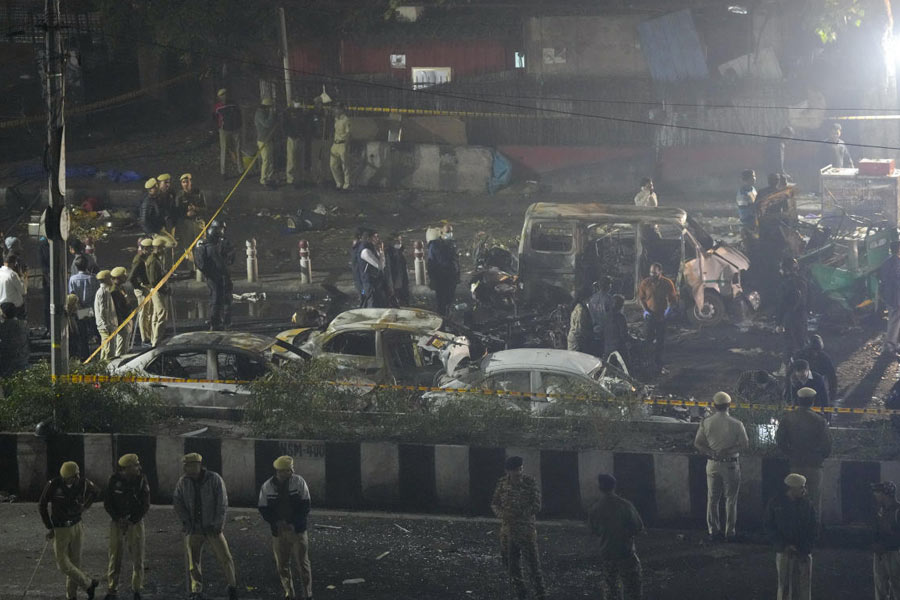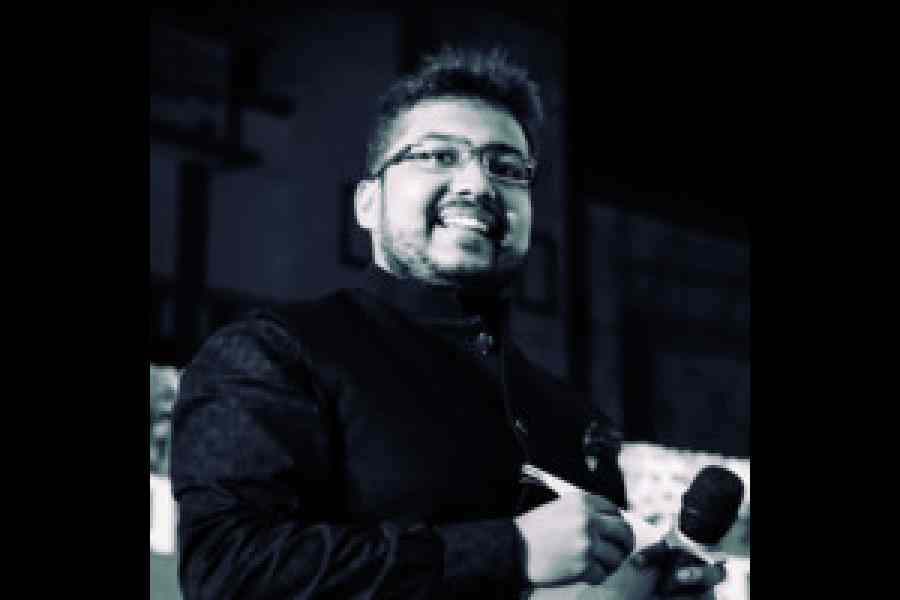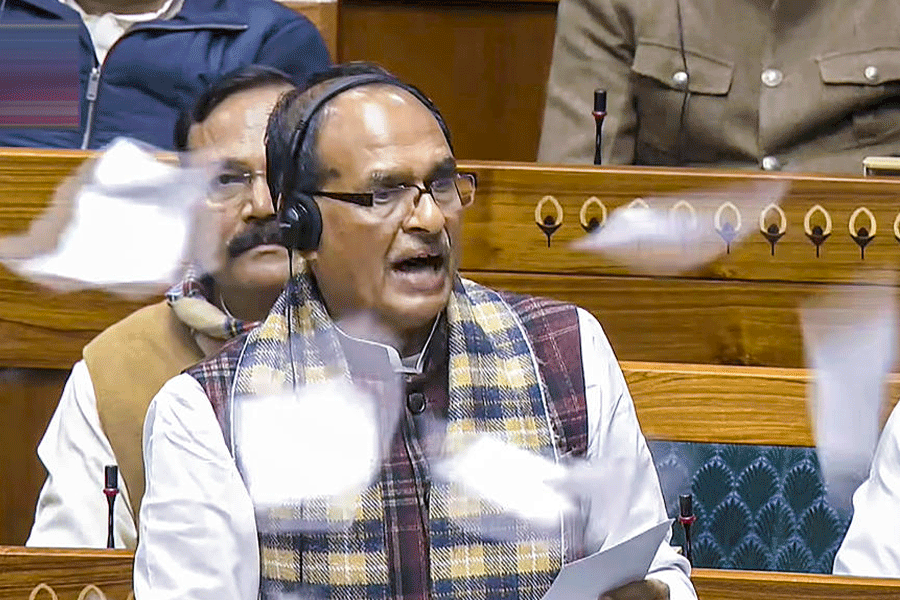London, June 9: M.F. Husain, who died in London today, aged 95, was so buoyed by the political change in Bengal that he began to do a painting for Mamata Banerjee which may well have been completed.
“I want to go to Calcutta and give it to her personally,” friend Anwar Siddiqui, an art collector in London, quoted Husain as having told him.
Exiled from the country he loved, Calcutta had apparently become a beacon to him. “Calcutta is the only truly secular city in India,” he had said to Siddiqui, who considered the artist to be “like a father to me”.
Husain died at 2.30am here (7am in India). “We can confirm that Mr M.F. Husain was being treated at Royal Brompton Hospital and died here this morning,” a spokeswoman for the Royal Brompton & Harefield NHS Foundation Trust said.
Born Maqbool Fida Husain in Pandaharpur, Bombay Presidency, on September 17, 1915, he was known universally as M.F. Husain or simply “MF”.
According to Siddiqui, who was closely in touch with MF in recent weeks and saw him last on Tuesday, “he was in and out of hospital over the past month. He went in three days ago. He was breathless because of water retention in the lungs and had sleepless nights. He did not die of a heart attack as has been reported.”
At MF’s request, Siddiqui and his wife Kiki, who once ran an art gallery in London, kept the patient supplied on a regular basis with his favourite “aloo palak, subzi and daal”.
Having taken up the citizenship of Qatar, MF was “getting exhausted” executing huge paintings depicting aspects of Arab culture for the Qatar royal family but the memento for Mamata came from the heart, it seemed.
“He had been to Calcutta many times,” said Siddiqui.
MF’s family members, some of whom were already in London and others flying into Heathrow, did wonder whether to repatriate his body to the artist’s “beloved Bombay ” — Mumbai was an alien concept to him — or hold the funeral in London. Ultimately, it was recognised that holding the funeral in India might provoke a backlash from Hindu fundamentalists whose threats had succeeded in turning MF into an exile from his own land for virtually the final decade of his eventful life.
A family friend and businessman, Yogesh Mehta, who began collecting Husain paintings 20 years ago and now has 51 of them, said: “The family did consider taking him back but considering the situation in India, it has been decided the funeral will take place in Woking, Surrey, tomorrow (Friday).”
The funeral is due to take place at Brookwood, set in some 500 acres of the Surrey countryside. It dates back to 1852 and contains the graves of many Indians Muslim soldiers from the First and Second World Wars.
As Mehta left the Royal Brompton after consoling three of MF’s children who were already in London, he disclosed that although MF “will be buried in London, his heart was always in India”.
Mehta confirmed MF’s affection for Calcutta. “He never gave up hope. Right till the end, he was thinking of painting and ‘the next project’. He said he wanted to go first to Calcutta and then Bombay.”
MF’s sons, Owais and Mustafa, and his daughter, Raisa, are already in London. Two other sons, Saffat and Shamshad, the latter himself an artist who was in London a few ago, are expected to arrive in time for the funeral.
By coincidence, two of MF’s paintings had been included today for an auction, “An Indian summer: South Asian Modern and Contemporary Art”, which had long been planned by Christie’s.
The packed auction room in South Kensington heard a tribute to MF read by Hugo Weihe, Christie’s senior vice-president, Southeast Asian Art, who said: “We at Christie’s are deeply saddened by the loss of a great master, whose influence on Modern and Contemporary South Asian art is immeasurable. We are honoured to have borne witness to his genius through the works we have handled in sales and exhibitions. He was a great friend and inspiration to so many around the world. His leadership and contribution to the art world cannot be overstated and although we will miss him, he lives on forever in his art.”
Then followed a one-minute silence. Instead of a garlanded photograph of the departed artist, one of the two paintings for sale, Sita with the Golden Deer, occupied pride of place on an easel.
The estimated sale price for the painting, acrylic on canvas and done in 1991, was put at between £50,000 and £70,000. This was the last lot for sale today — the hammer came down on £58,000 but the phone bidder will have a premium added on top, making a total of £70,850.
The note from Christie’s emphasised MF was often inspired by Hindu mythology. “Husain has created several series of works based on the writings of the Ramayana,” the auction house said. “Influenced by the great epic, the painting depicts a critical scene right before Sita’s abduction that leads into the events of the pitched battle between Rama and Ravana.
The other work was an untitled oil on canvas, estimated to be worth between £15,000 and £20,000. This went to an online buyer in Singapore for £37,250 — and attracted more attention than a Tyeb Mehta, which fetched £1,973,250, a new world record for the artist at auction which would have caused more of a buzz on another day.
The Tyeb Mehta was done in 1983 when he was invited to be an artist in residence at Santiniketan for two years.
Today’s auction room turned into almost a gathering of Indians who mourned MF’s passing. Writer Shobhaa De and her husband, Dilip, were in the room, with representatives of Vadhera and many other art galleries.
Filmmaker Behroze Gandhy spoke for many when she summed up: “A loss to his family and the Indian nation. It’s a real shame no one had the guts to assure his safety, so his wish to visit his homeland for the last time was never realised.”
One of MF’s admirers said: “There is a lot of anger here that the government did nothing. They are all going on television today but they did nothing. The government must organise a memorial service for MF at the Nehru Centre in London.”


